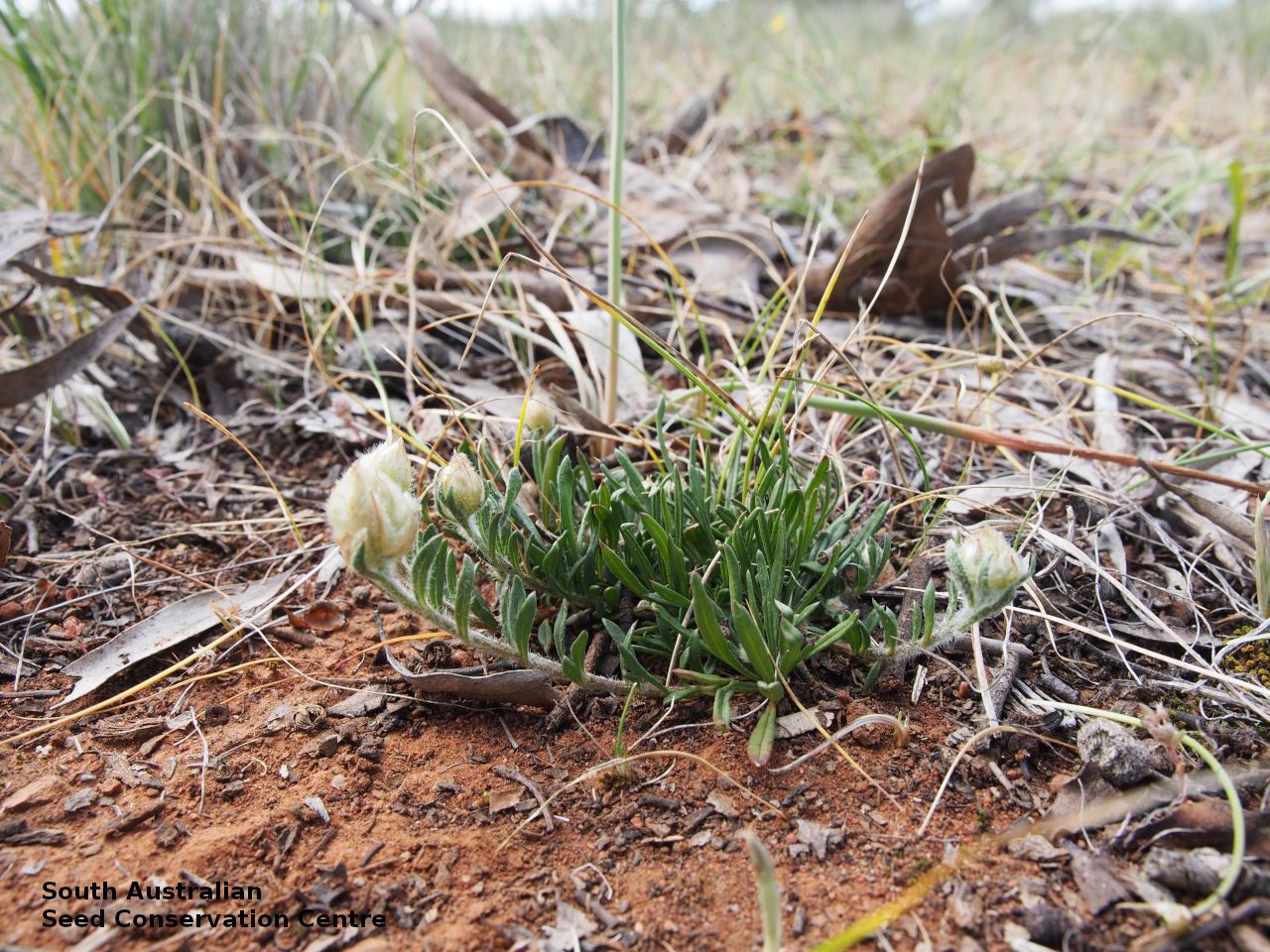
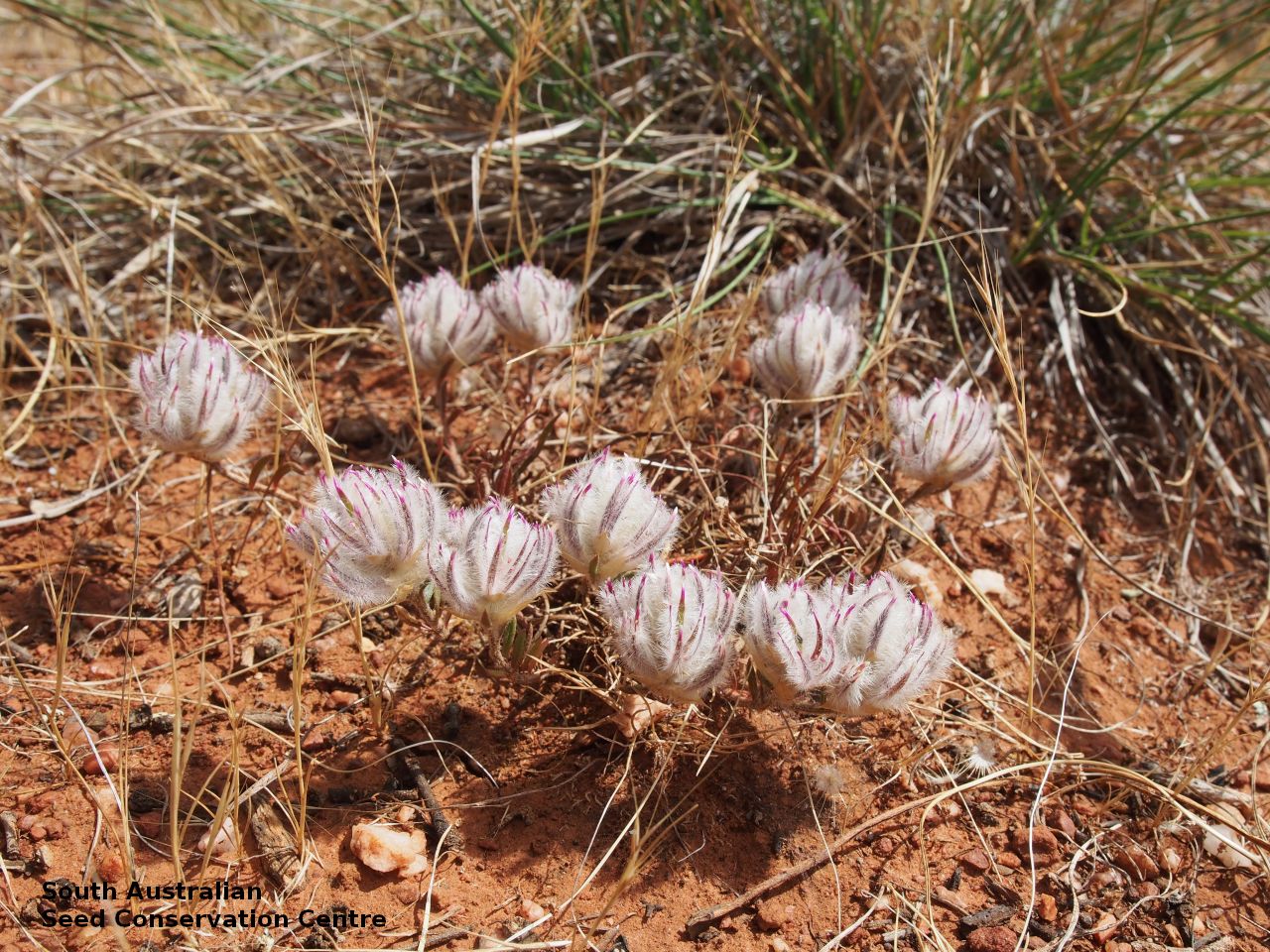
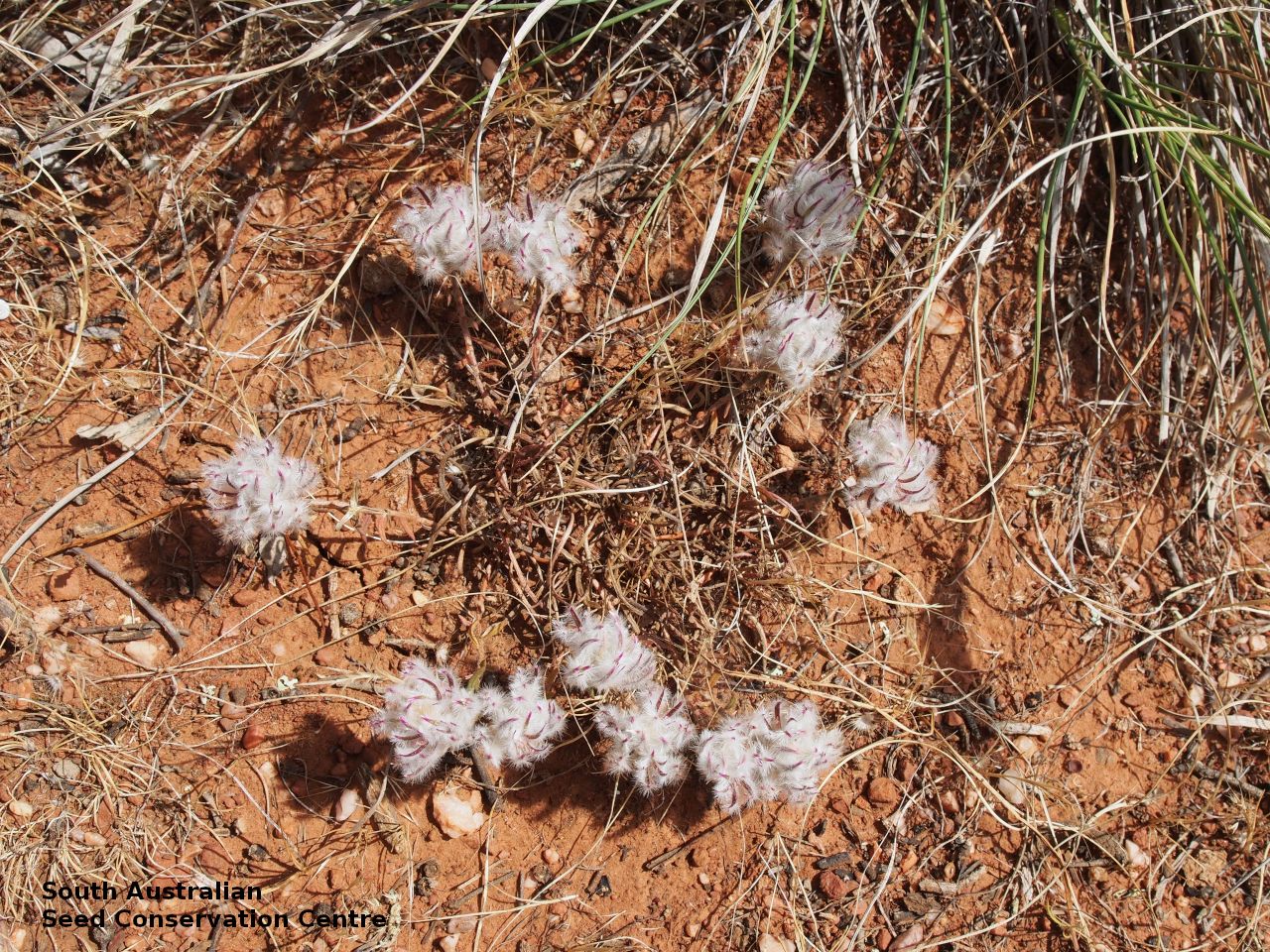
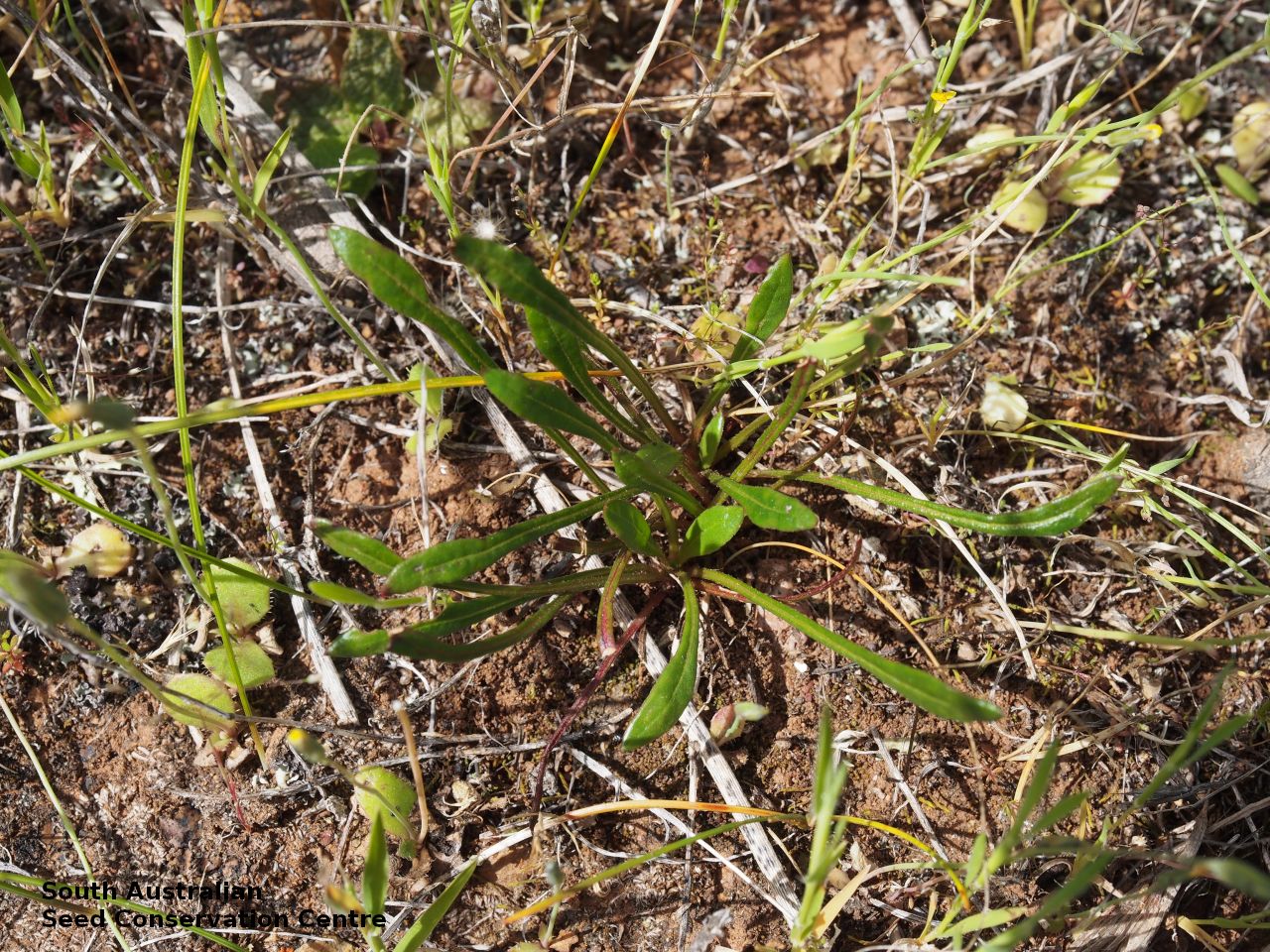
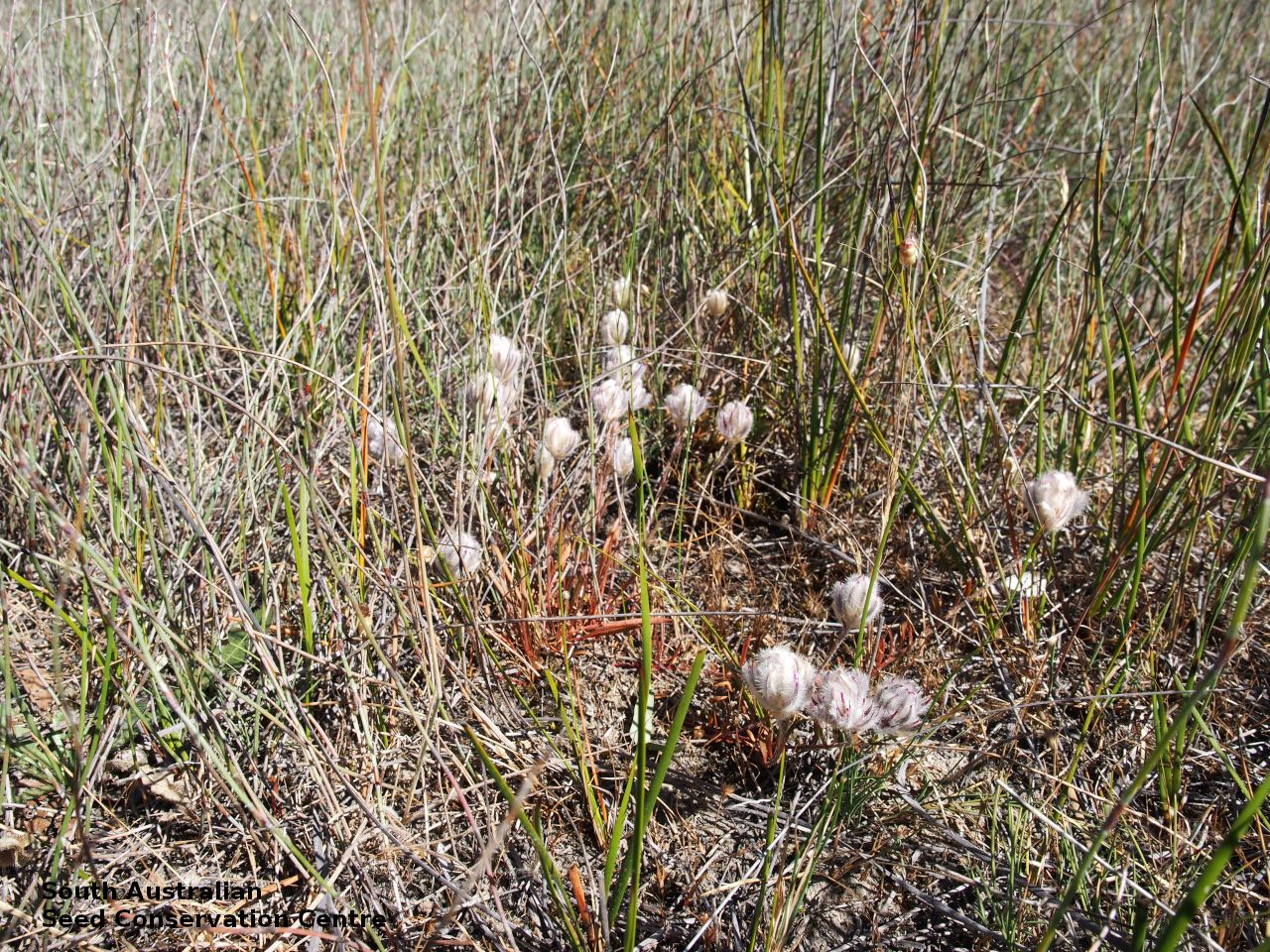
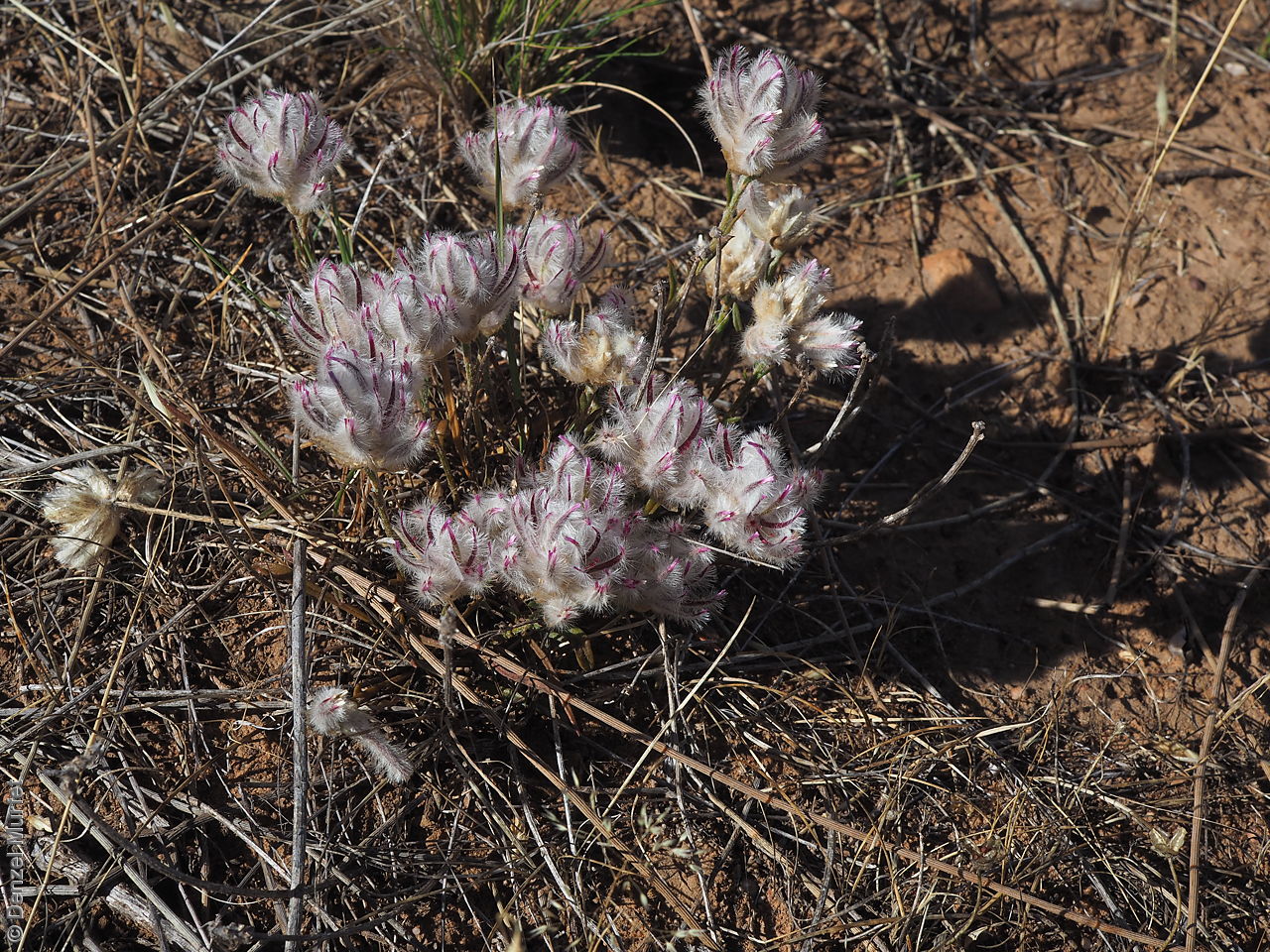

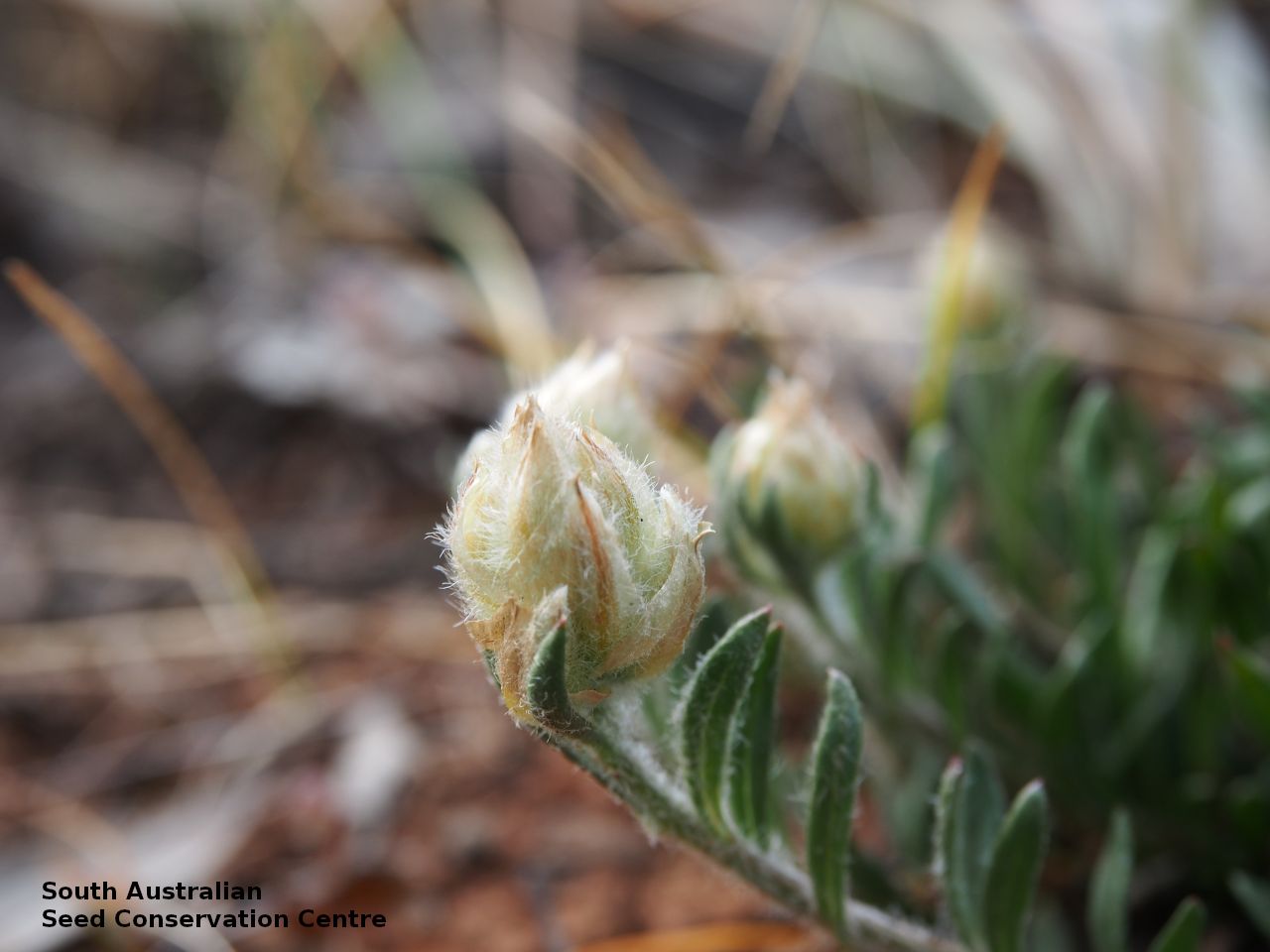
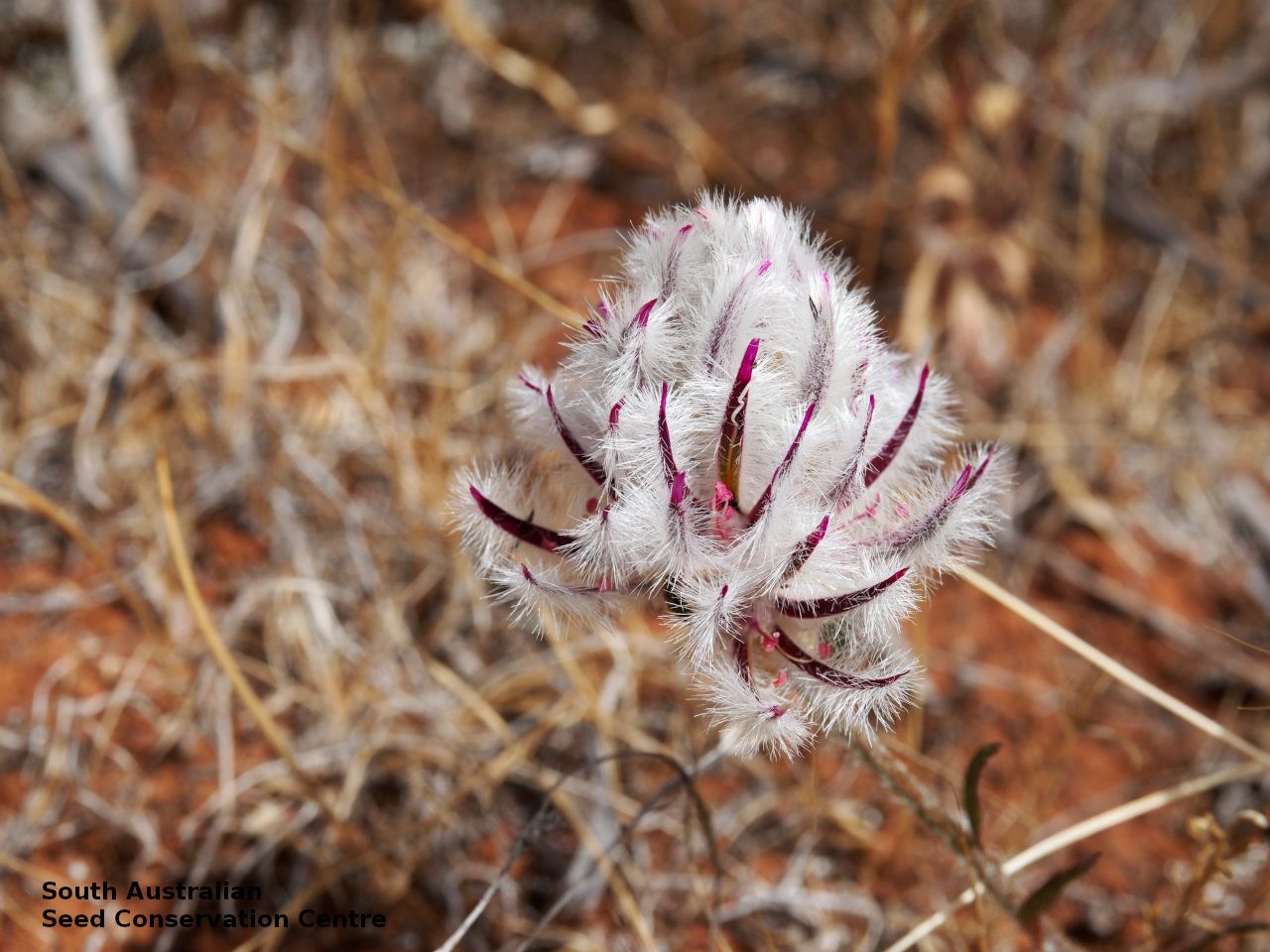
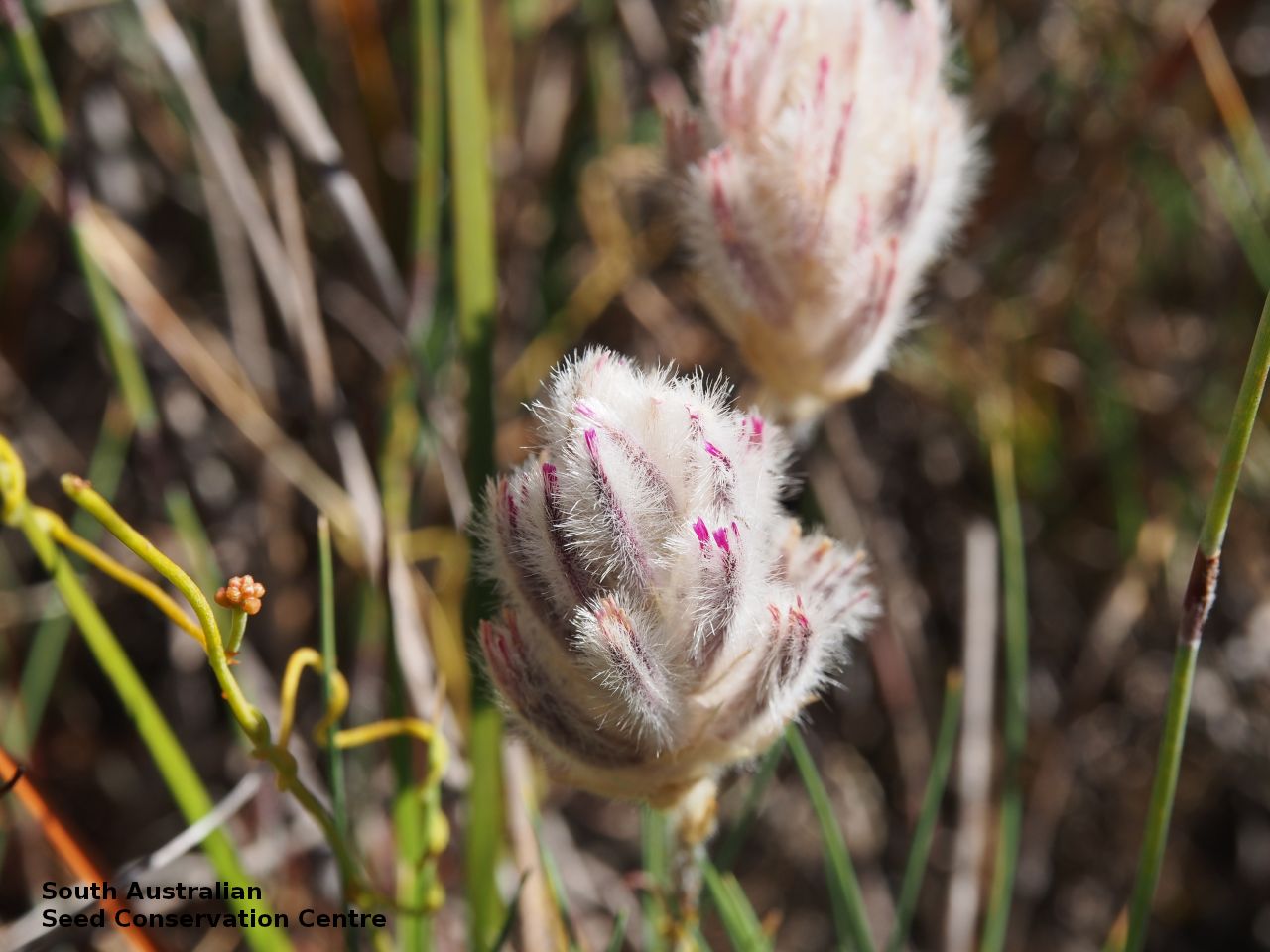
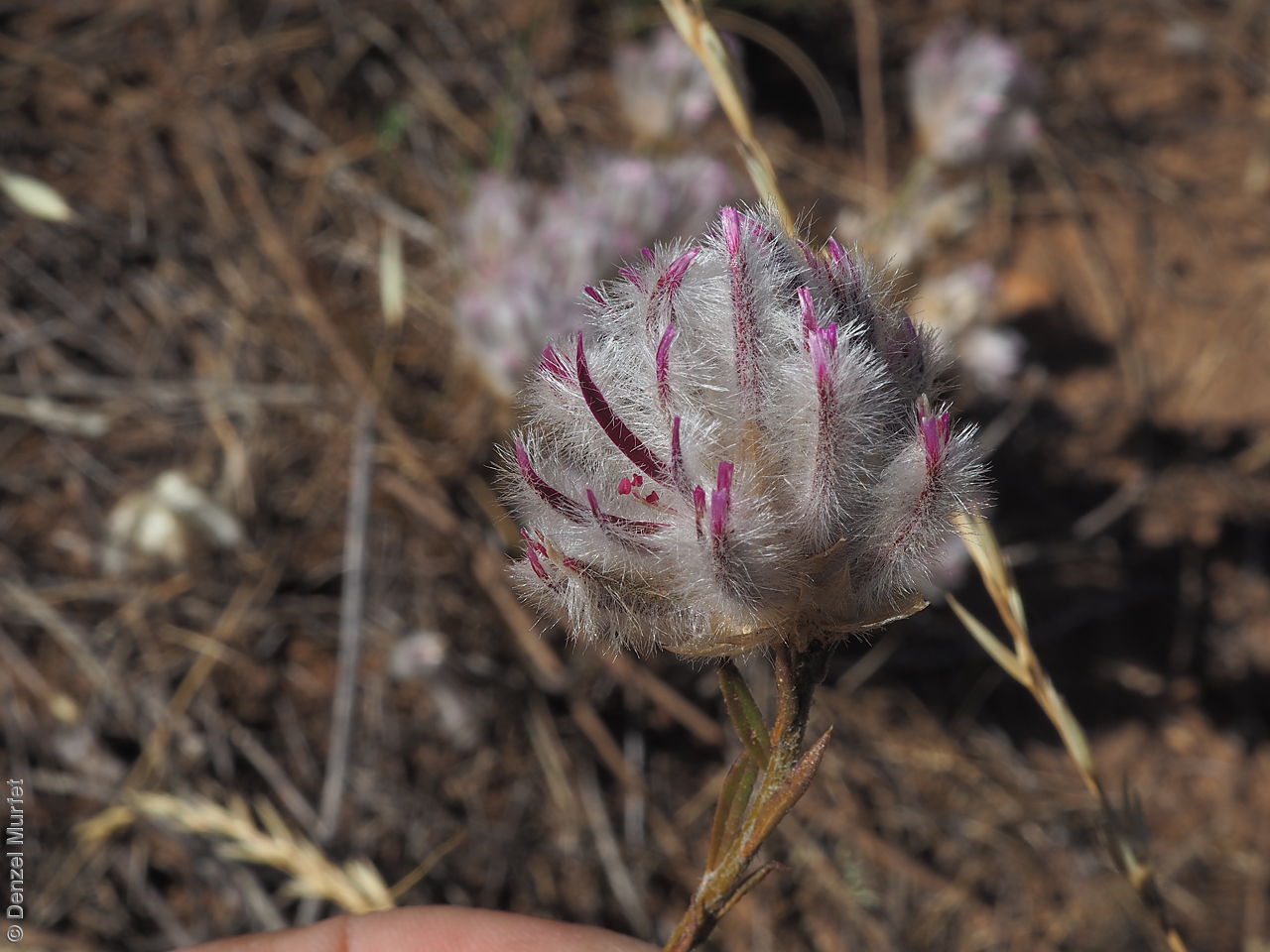
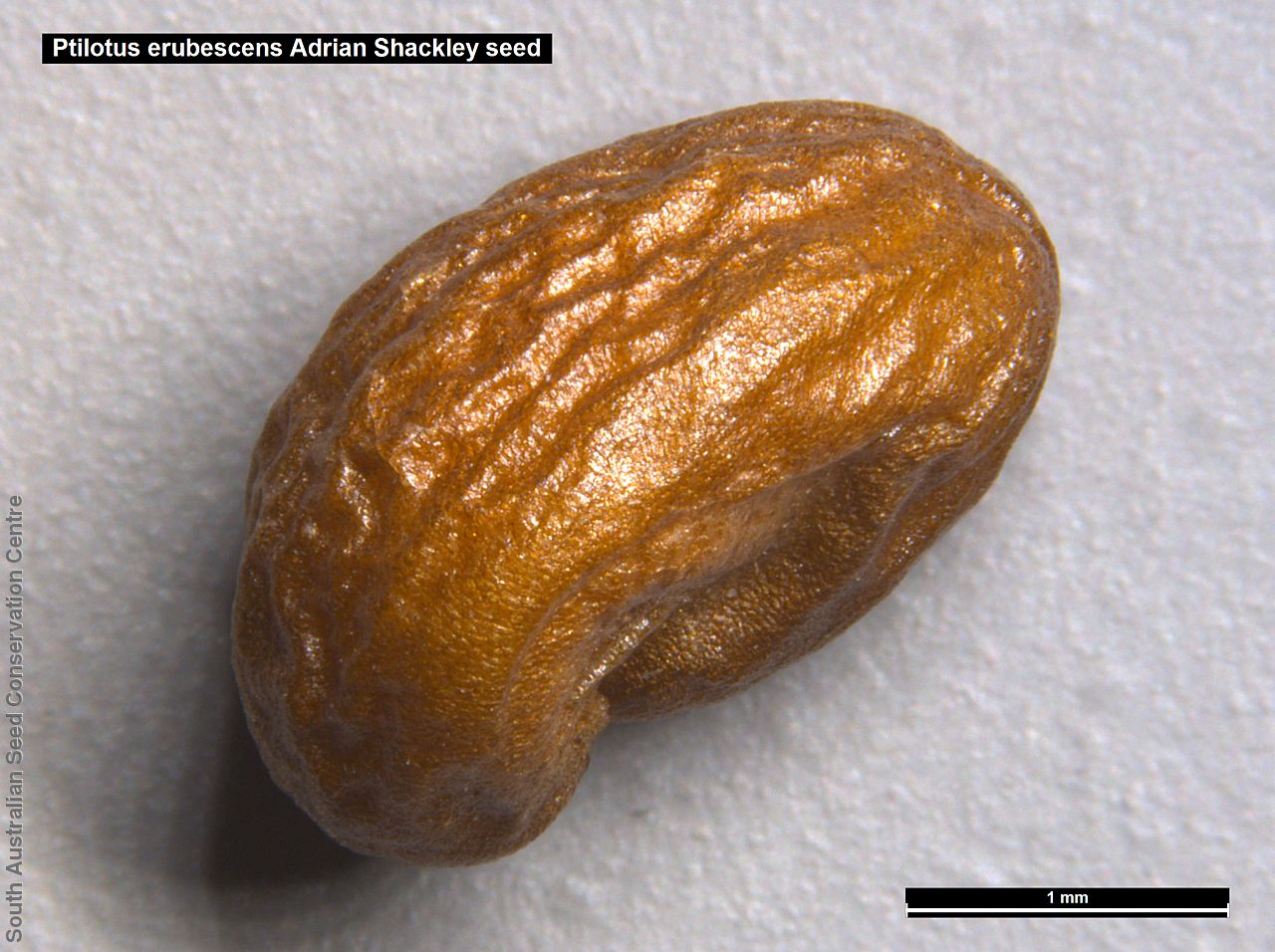
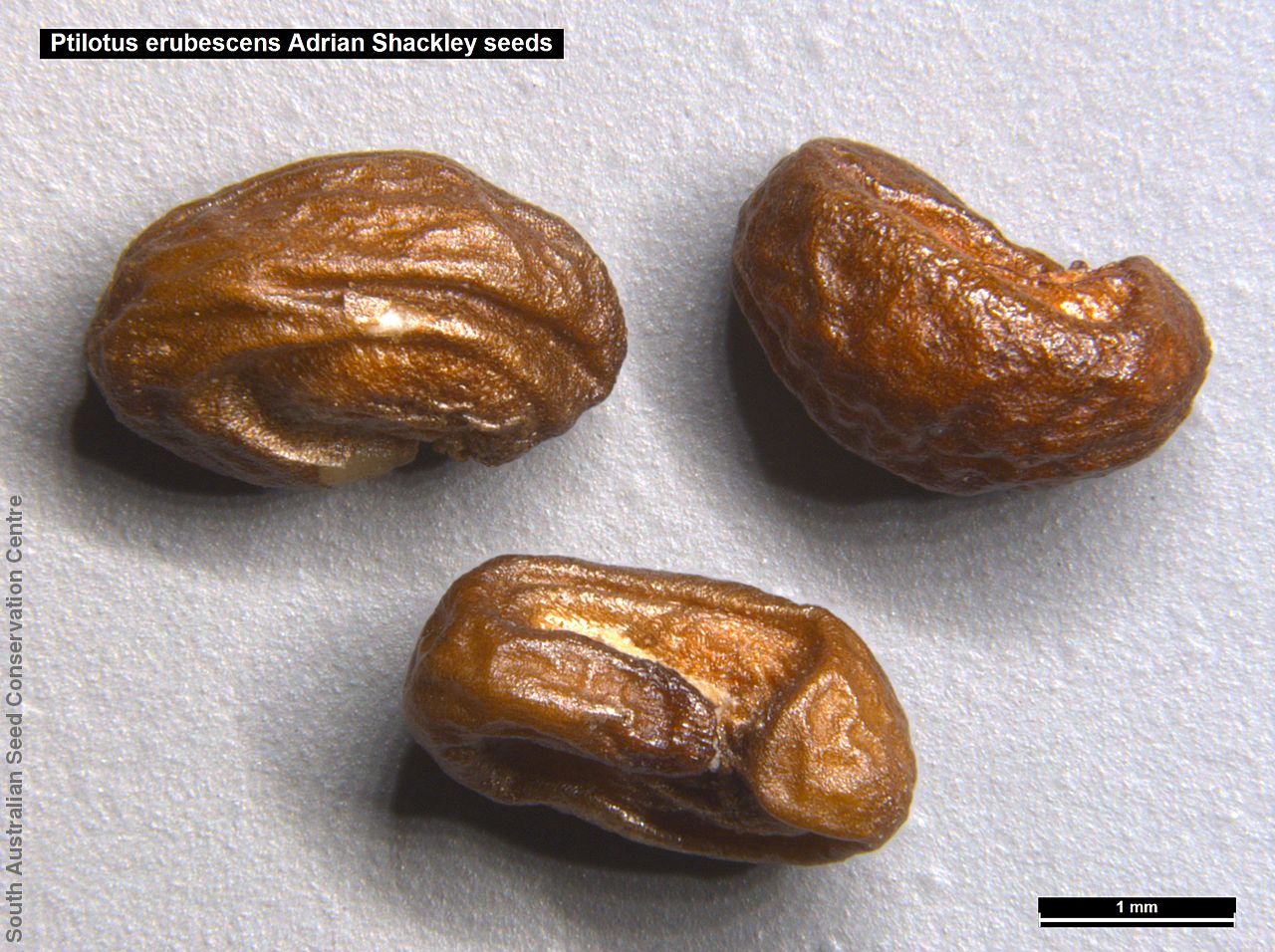
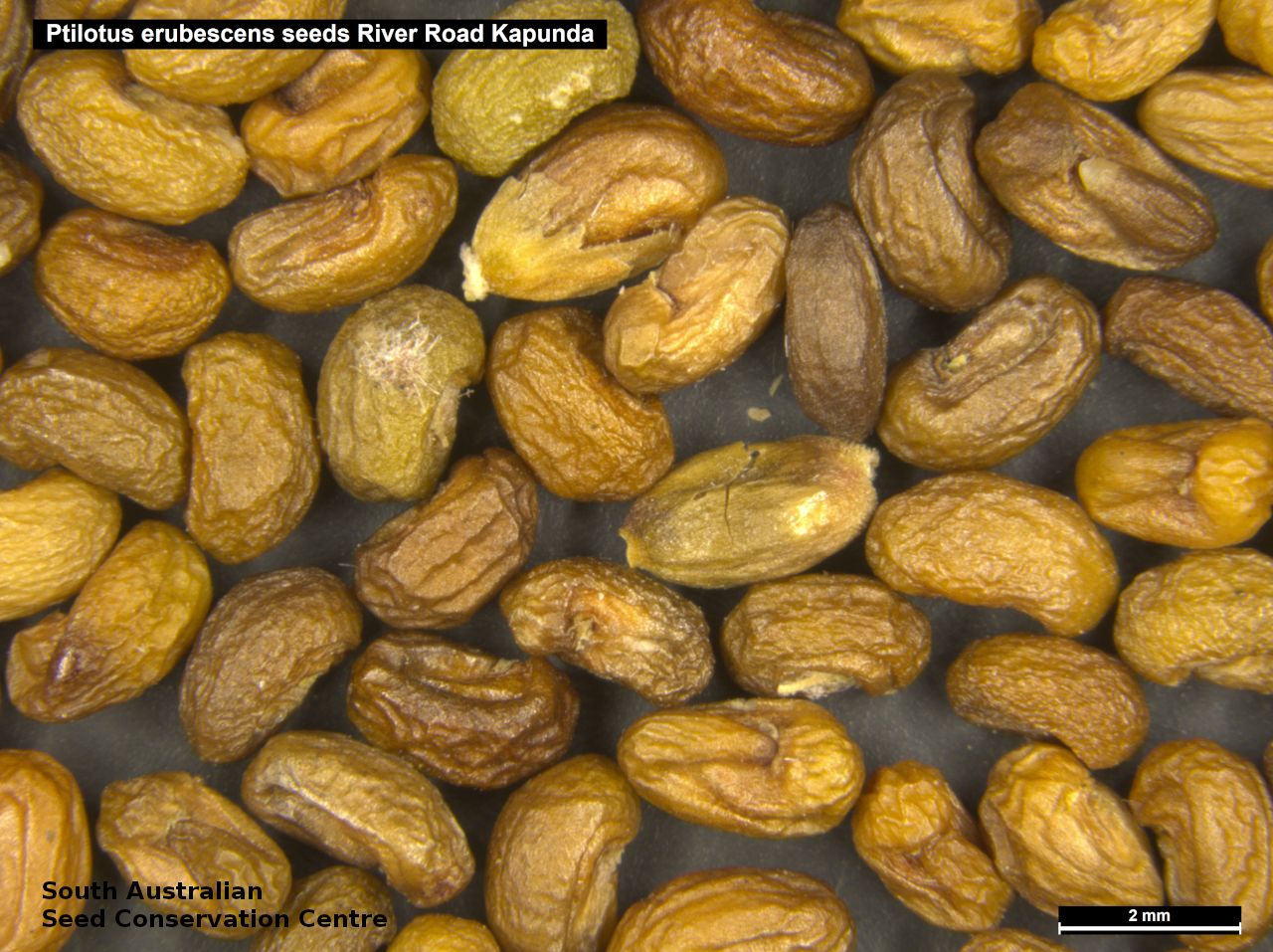
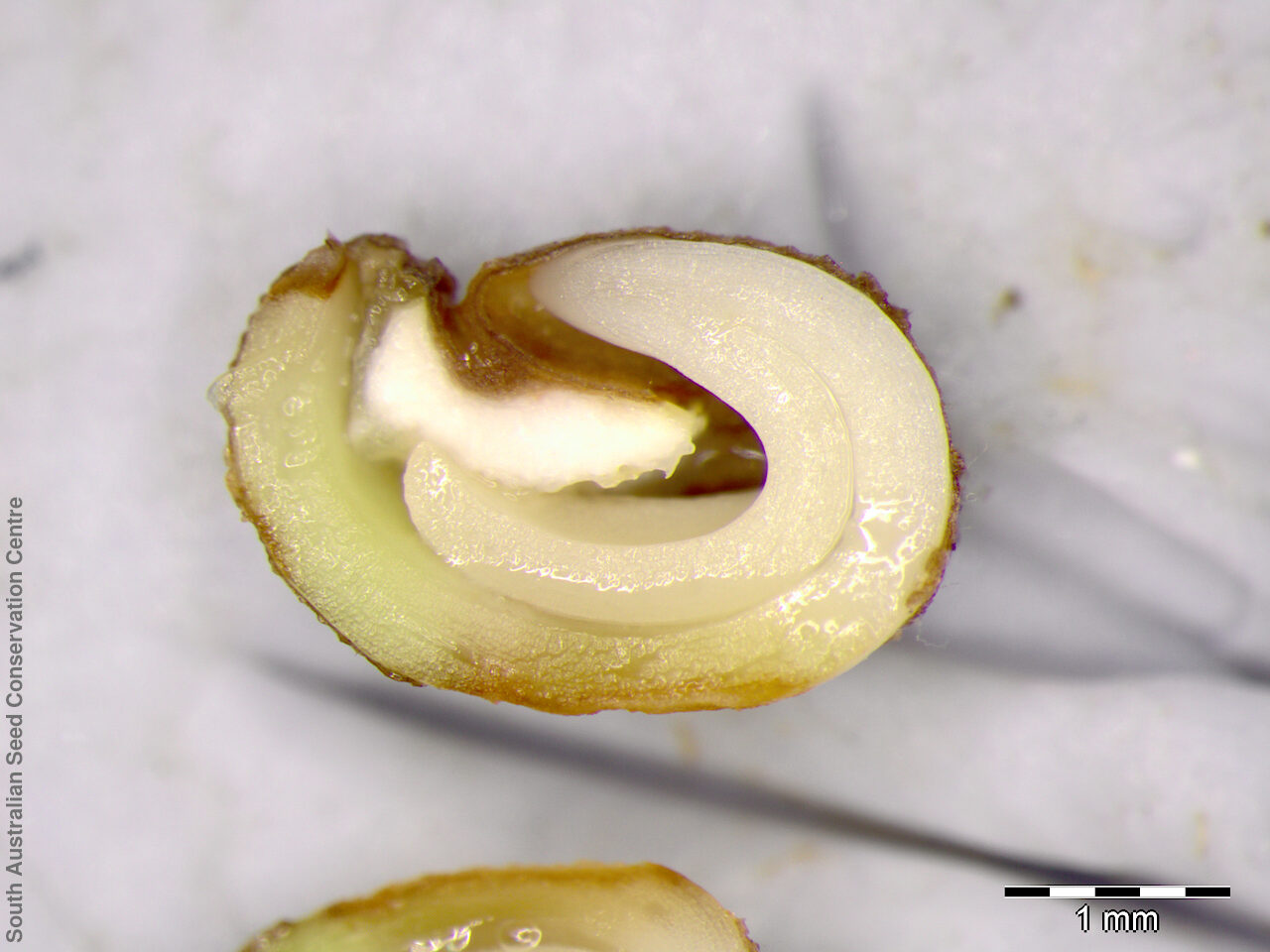
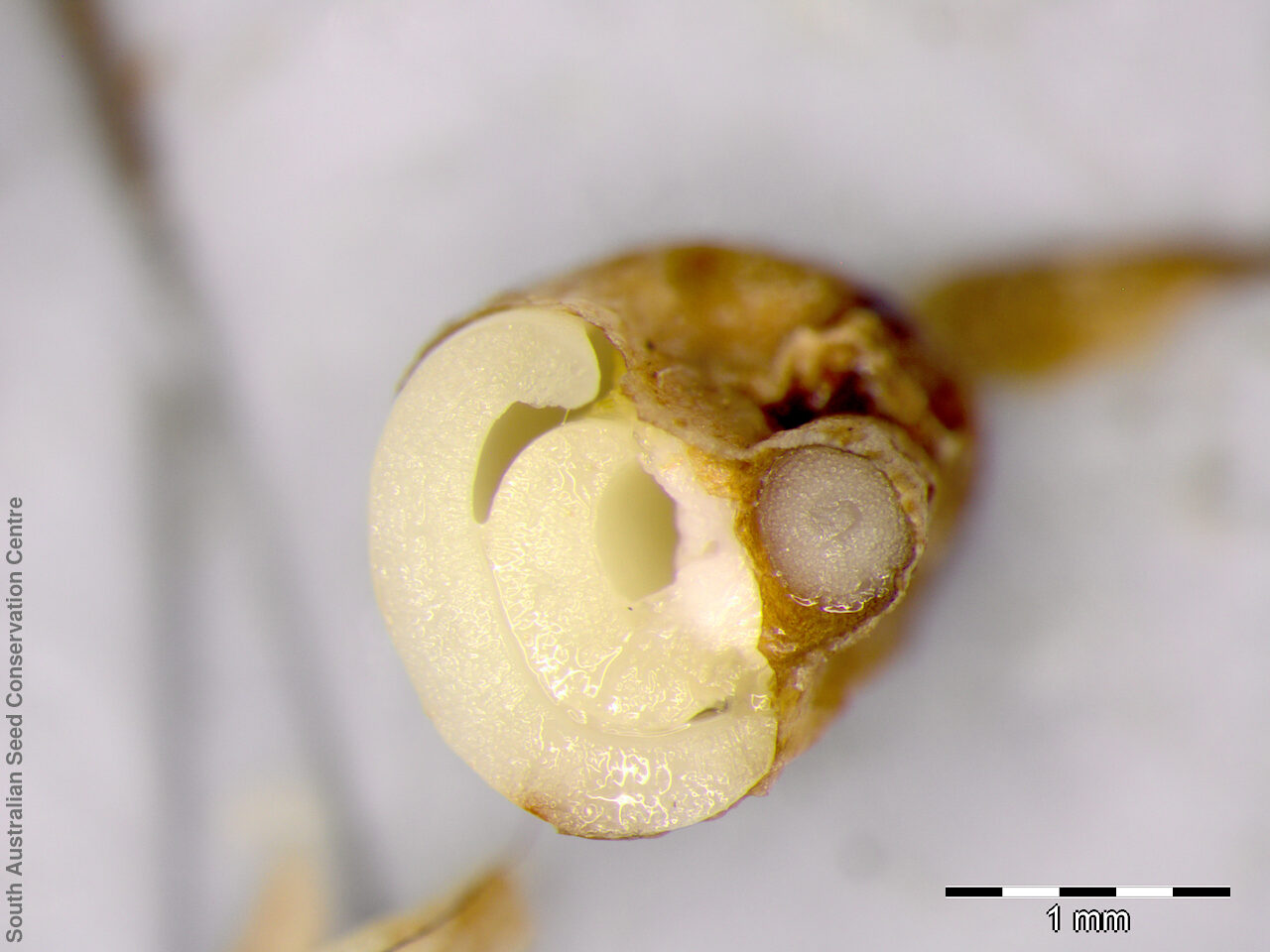

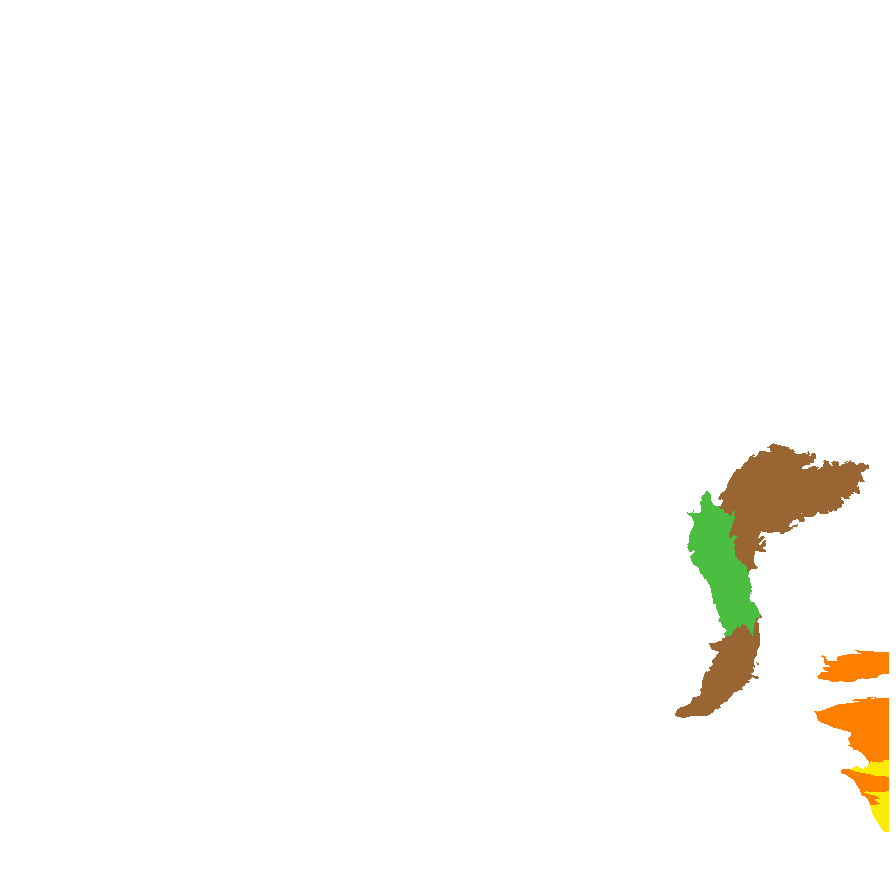
Botanical art
Prior names
Trichinium linifolium
Trichinium erubescens
Common names
Hairy Heads
Hairy-tails
Etymology
Ptilotus from the Greek 'ptilotos' meaning feathered or winged; referring to the hairy flowers. Erubescens from the Latin 'erubesco' meaning blushing or becoming red; referring to the presence of pink bracts on the predominantly green flower as it mature, give them the appearance of blushing.
Distribution and status
Found mainly in the southern Flinders Ranges and Mount Lofty Ranges in South Australia with an isolated destruction near Bordertown, growing in fertile soil in grassy woodland. Also found in New South Wales and Victoria. Native. Rare in South Australia. Uncommon in the other states.
Herbarium regions: Flinders Ranges, Northern Lofty, Murray, Southern Lofty, South Eastern, Green Adelaide
AVH map: SA distribution map (external link)
Plant description
Erect perennial herb with a woody rootstock and stems to 40cm tall, hairy when young. Leaves clustered at the base of the plant and alternating up the stems. Basal leaves to 120 mm long and 4mm wide, stem leaves to 30 mm long and 3mm wide, linear to narrow and flat, hairy becoming hairless, with pointed tips. Flower-spikes spherical to oval, solitary at the tops of the stems with greenish to red or purple, covered with silvery white hairs. Flowering between October to February. Fruits are whitish globular head containing numerous long papery and hairy fruits, each containing one seed. Seeds are orange-brown, reniform to 3 mm long and 2 mm wide. Seed embryo type is peripheral.
Seed collection and propagation
Collect seeds between December and March. Be very careful when collecting this species as the fruits contain fine hairs that may cause an allergic reaction for some people. Collect the fruit heads when dried to a pale straw colour. Each fruit should come off the head easily when fingers are rubbed up the stem. Collect more fruits than required as not all fruits will have a viable seed. Be very careful when cleaning this species as the fruits contain fine hairs that may cause an allergic reaction for some people. To clean, rub the fruit heads gently to dislodge the seed at the base of each fruit. Use a sieve to separate the unwanted material. Store the seeds with a desiccant such as dried silica beads or dry rice, in an air tight container in a cool and dry place. Seed viability is usually high but seed availability tend to be low. Seeds are non-dormant, viable seed should germinate readily.
| Location | No. of seeds (weight grams) | Number of plants | Date collected | Collection number Collection location | Date stored | % Viability | Storage temperature |
|---|---|---|---|---|---|---|---|
| BGA | 780 (8.66 g) | 25+ | 9-Jan-2006 | KHB45 Southern Lofty | 28-Jul-2006 | 25% | -18°C |
| BGA MSB | 2,900 (26.04 g) 2,900 (26.04 g) | 100+ | 10-Jan-2006 | DDC1422 Northern Lofty | 28-Jul-2006 | 35% | +5°C, -18°C |
| BGA | 690 (0.6 g) | 100+ | 22-Dec-2008 | TST679 Southern Lofty | 20-Jul-2009 | 70% | -18°C |
Number of plants: This is the number of plants from which the seeds were collected.
Collection location: The Herbarium of South Australia's region name.
% Viability: Percentage of filled healthy seeds determined by a cut test or x-ray.